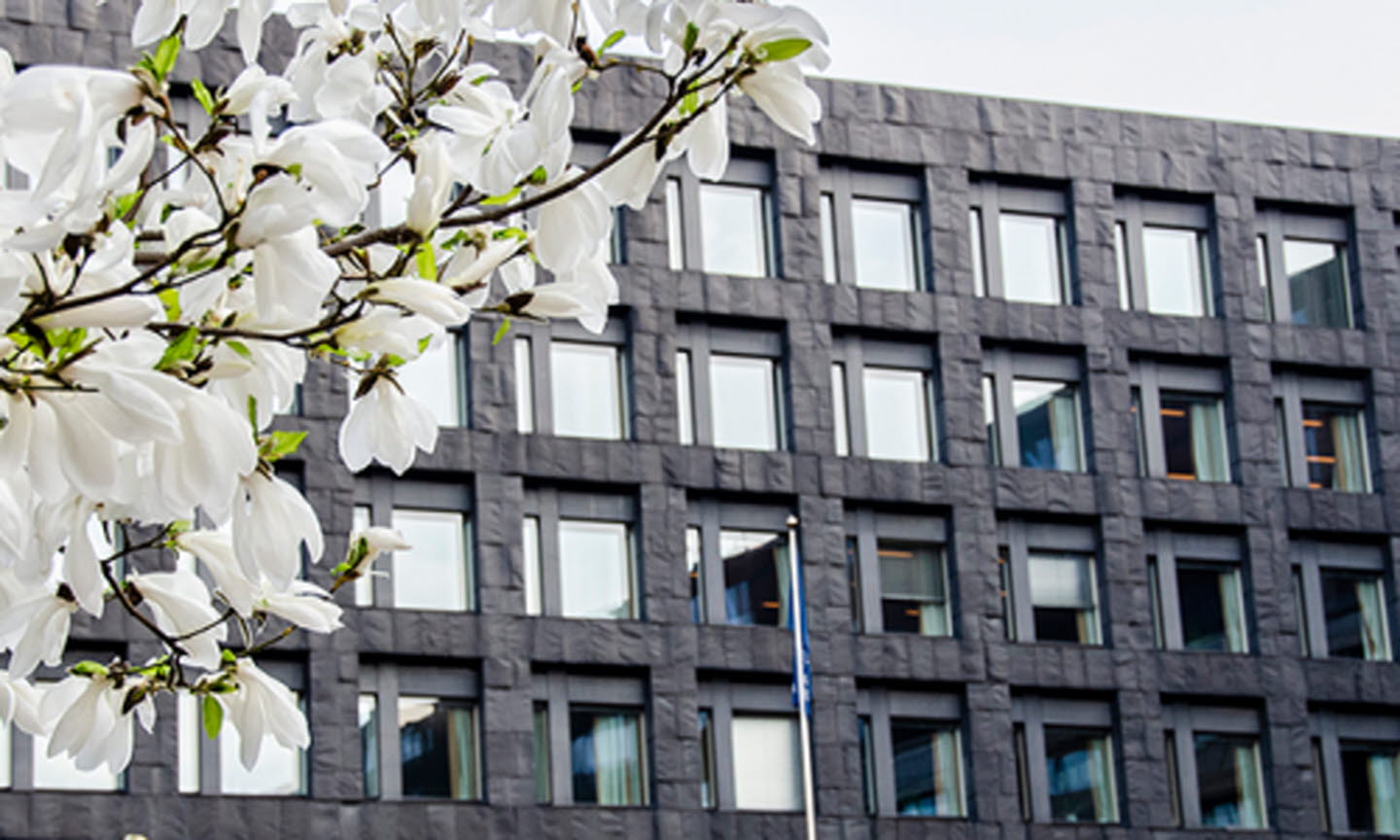The architecture
The current Riksbank building at Brunkebergstorg 11 was completed in 1976. It took six years to build. The architect Peter Celsing found the black granite that forms the building’s façade in Göinge in northern Skåne. Although this stone, from the quarry in Gylsboda, is called “black granite”, it is geologically classified as dolerite. Stonemasons in Bohuslän cut the large stone blocks, producing their rough surface.
If you think the building seems impregnable, that was exactly Celsing's intention. Sveriges Riksbank is supposed to look like the strongbox that it is. A building built to last. The windows are recessed deeply into the thick stones of the facade. The cylindrical entrances facing Brunkebergstorg were made from stainless steel.
However, once inside the building, visitors are met by a contrast to the heavy structure. The walls, ceilings and furniture are all clad in light, thinly cut birch from Norrland and Finland. Cheerful, lush artwork decorates both rooms and corridors.
Peter Celsing based his designs on the geometric shapes of the circle and square. The main structure of the building creates the impression of a huge cube; the main entrance includes cylindrical doors, the General Council and Executive Board hold their meetings at a round table in a quadrant-shaped room, the smaller guest dining room is a cylinder, the courtyard a square and the attic storey a dome. Cylindrical pillars, located close to the walls, support the level ceilings in the unfurnished corridors. The outer wall in the offices is always quadratic, and the width of the smallest rooms is equal to their height. Peter Celsing engaged the services of the artists Ulrik Samuelson and Sivert Lindblom at an early stage of his work. Together they designed the attic storey, including a swimming pool and other recreational facilities for the staff. Celsing chose the colours of the fixtures and fittings in collaboration with the artist Olle Nyman. The walls are white, and the ceilings, carpeting and pillars are sandy yellow.
After a tour of the building, the art critic Ulf Linde, subsequently head of the Thielska Gallery and a member of the Swedish Academy, wrote: "I am surprised that new architecture can make me feel so exhilarated. Finally some support for the watchword, which has been repeated ad nauseum, that the artists should be involved in the early stages of planning a building, that their work should not just be a separate, secondary issue to be considered later on."
Film about the Riksbank building
Watch a film about the architecture and history of the buildingThanks for your feedback!
Your comment could not be sent, please try again later


Questions? Visit our FAQ on kundo.se (opens i new window).